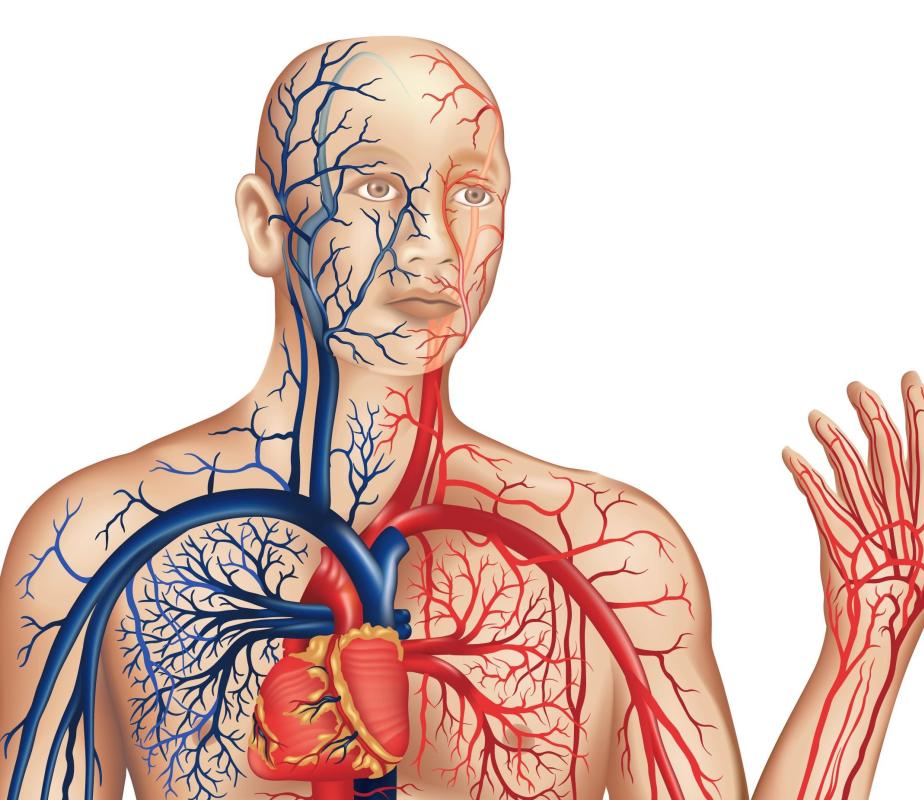At TheHealthBoard, we're committed to delivering accurate, trustworthy information. Our expert-authored content is rigorously fact-checked and sourced from credible authorities. Discover how we uphold the highest standards in providing you with reliable knowledge.
What Is the Connection between the Endocrine System and Circulatory System?
The endocrine system and circulatory system work in tandem, forging a production-and-distribution network for hormones. Production of hormones is the domain of the endocrine system, which consists of a collection of glands that secretes special chemicals that modulate various functions in the body. Unlike exocrine glands, which use ducts for transporting hormones, endocrine glands release these chemical messengers into the bloodstream, thereby using the circulatory system as a carrier.
Customized receptors on the cells of organs immediately recognize and receive the hormones designed to guide their functions, ignoring all others. Excess hormones that do not bind to receptors remain stored in the bloodstream. This coordination between the endocrine system and circulatory system is so efficient that scientific reports suggest that endocrine systems are unlikely to evolve in animals that don't have circulatory systems.

Glands that rely on this specialized relationship include the thyroid gland, the pineal gland, the gonads, and the two adrenal glands. The Islets of Langerhans and the pituitary gland also benefit from this arrangement. Endocrine glands produce hormones classified in three categories: amines, steroids, and peptides. Glands such as the thyroid and adrenal glands often produce hormones in multiple categories. Scientists estimate that more than 50 different hormones are produced by the endocrine system.

One of the adrenal glands — the adrenal medulla — and the thyroid gland secrete amines, which are a type of hormone derived from the amino acid tyrosine. Characterized by their short amino acid chains, peptide hormones are secreted by the pituitary gland and thyroid. These are growth hormones that are used by the pituitary gland to govern body maturation and by the thyroid to govern metabolism. Flaws in the regulation of these peptide-based growth hormones can induce dwarfism or its opposite, gigantism.

Gonads, which consist of the testes and ovaries, secrete steroids, as does the second adrenal gland, the adrenal cortex. The steroid released by the adrenal cortex causes a person to experience the classic flight-or-fight response during episodes of fear and over-excitement. Ovaries release a steroid form of estrogen known as estradiol, which governs the development of feminine features in women. Testes release testosterone, the steroid that guides the development of masculine traits in males. A surge in the delivery of these steroids by the endocrine system and circulatory system occurs at the onset of adolescence, marking the start of puberty.
AS FEATURED ON:
AS FEATURED ON:















Discuss this Article
Post your comments